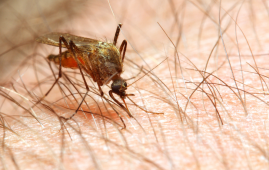

In a recent study published on the bioRxiv preprint* server, researchers demonstrated that transfer of immunoglobulin G (IgG) from long-term COVID patients produces symptoms in mice.
According to evidence, more than 10% of coronavirus disease 2019 (COVID-19) survivors continue to experience symptoms after 12 weeks of recovery. This condition is referred to as extended COVID-19 or post-COVID syndrome. However, the underlying etiology remains unclear. Several mechanisms have been postulated to explain protracted COVID symptoms, including neuroinflammation, dysbiosis, dysregulated interferon response, cellular metabolism, and autoimmune.
According to studies, autoimmunity is induced during and after acute COVID-19. Long COVID-related autoantibodies interact with neurotransmitters, chemokines, G protein-coupled receptors, and immune modulators. Clinical improvement in long-term COVID is most likely connected with decreasing autoantibodies. However, it is unclear if autoantibodies (actively) contribute to long-lasting COVID symptoms.
Long COVID Study
In the current study, researchers investigated the function of autoantibodies in long-term COVID pathogenesis. They comprised long-term COVID-19 patients aged 18 to 65 who visited a post-COVID-19 clinic in Amsterdam. Blood samples were collected at least 90 days after infection. Demographics, symptoms, comorbidities, and prescription information were gathered from health records.
Two control groups were included: healthy patients collected prior to the pandemic and healthy individuals following moderate COVID-19 with no lingering symptoms. Plasma levels of IL-10, IL-6, IL-1β, IFN-β, IFN-γ, IFN-α2a, total tau, GFAP, and NFL were measured in COVID-19 patients and controls. Protein profiling was carried out using Olink proteomics technique.
IgG antibodies were isolated from both patients and controls. Adult C57BL/6 mice were then injected with IgG and subjected to behavioral tests. The Hargreaves and von Frey experiments established heat withdrawal latency durations and mechanical thresholds, respectively. An open field test assessed locomotor activity, whereas a rotarod analysis measured stamina. Next, mouse tissues were collected for immunohistochemistry.
Long COVID Findings
The study comprised 34 long-term COVID patients who had confirmed SARS-CoV-2 infection and were in good mental and physical health before to COVID-19. They were not hospitalized, and their symptoms persisted for at least six months after infection. Patients experienced a variety of symptoms, although exhaustion remained consistent. Twenty-six individuals were unable to continue their jobs, 25 complained pain, and 29 experienced post-exertional malaise.
In addition, 15 healthy controls with a minor illness were included. Pro-inflammatory cytokines in acute COVID-19 were similar to those in long COVID patients and controls. Long-term COVID patients had reduced IFN-γ levels and increased IFN-β levels. GFAP levels were higher in 10 long-term COVID patients but undetectable in controls. There were no significant variations in tau or NFL levels between controls and long-term COVID patients.
The scientists classified long COVID patients based on IFN and GFAP levels; the long COVID-1 (LC-1) group included 12 patients with elevated levels of astroglial activation and neuronal damage indicators. LC-2 had 10 patients with higher type 1 IFN levels (IFN-β and IFN-α2a) compared to LC-3. LC-3 demonstrated reduced amounts of IL-1β, IL-6, type 1 IFNs, and TAU compared to LC-2.
IFN-γ levels did not differ across subgroups. Partial least-squares discriminant analysis revealed that LC-1 separated on principal component 1 (PC1), whereas the others did so on PC2. Subsequently, gene set enrichment analysis revealed that LC-1 was related with higher levels of intracellular transport proteins and lower levels of cell surface proteins.
In contrast, LC-2 was enriched for muscle-related proteins, while LC-3 was enriched for lipoproteins. Purified IgG from long-term COVID patients and healthy controls collected before the pandemic was pooled and administered into animals. Fifteen days later, the presence of human IgG (hIgG) in various tissues was studied. Overall, hIgG from patients or controls was found at comparable amounts in all studied tissues in mice.
Long COVID IgG recipients had a lower mechanical sensory threshold, indicating mechanical hypersensitivity, compared to controls. Mechanical hypersensitivity developed in LC-1 hIgG recipients on day 3, whereas it appeared in LC-3 hIgG recipients 24 hours after treatment. However, the delay to heat stimulation decreased in all hIgG recipients, demonstrating increased heat sensitivity.
This state resolved within three days in control hIgG recipients, but lasted up to 15 days in the LC groups. Mice treated with hIgG from long-term COVID patients showed a modest reduction in locomotor activity. Only LC-2 hIgG recipients had a significantly shorter walking distance on day 1 after injection, while the other LC groups exhibited no changes at any time point. Rotarod analysis revealed no differences between LC and control hIgG recipients.
Conclusion
In summary, the findings indicate at least three separate lengthy COVID groupings. Passive transfer of IgG from these subgroups resulted in subgroup-specific pain-associated behavior and reduced locomotor activity, indicating that IgG plays a role in long-term COVID pathogenesis. Future research should identify specific pathogenic IgGs to have a more comprehensive knowledge of the disease and develop targeted treatments.
For more information: Chen HJ, Appelman B, Willemen H, et al. Transfer of IgG from Long COVID patients induces symptomology in mice. BioRxiv, 2024, DOI: 10.1101/2024.05.30.596590, https://www.biorxiv.org/content/10.1101/2024.05.30.596590v1
more recommended stories
 Ultramarathon Physiology: What HCPs Should Know?
Ultramarathon Physiology: What HCPs Should Know?Ultramarathon Metabolism: What Happens to the.
 High-Intensity Training and Oxidative Stress Insights
High-Intensity Training and Oxidative Stress InsightsNew Evidence Linking High-Intensity Training and.
 Sterilized Fermented Beverage for Obesity: New Evidence
Sterilized Fermented Beverage for Obesity: New EvidenceEarly Insights Into a Sterilized Fermented.
 Cardiovascular Risk and Sudden Cardiac Death in Diabetes
Cardiovascular Risk and Sudden Cardiac Death in DiabetesRising Sudden Cardiac Death (SCD) Risk.
 Perinatal Mental Health Challenges Highlighted in New Study
Perinatal Mental Health Challenges Highlighted in New StudyMental Health Challenges in New Parents:.
 Walking Speed Before Hip Replacement Predicts Recovery
Walking Speed Before Hip Replacement Predicts RecoveryNew Evidence Points to a Simple,.
 How Soybean Oil Impacts Weight Gain and Metabolism
How Soybean Oil Impacts Weight Gain and MetabolismWhy Soybean Oil May Affect Metabolism.
 New Malaria Prevention Insights From African Biostatistics
New Malaria Prevention Insights From African BiostatisticsHow New Data Is Reframing Malaria.
 World Summit Outlines Core Principles for Healthy Longevity
World Summit Outlines Core Principles for Healthy LongevityWhy Healthy Longevity Demands a New.
 Gut Immune Cells and Long-Lasting Antiviral Protection.
Gut Immune Cells and Long-Lasting Antiviral Protection.Breakthrough Findings on How Gut Immune.

Leave a Comment